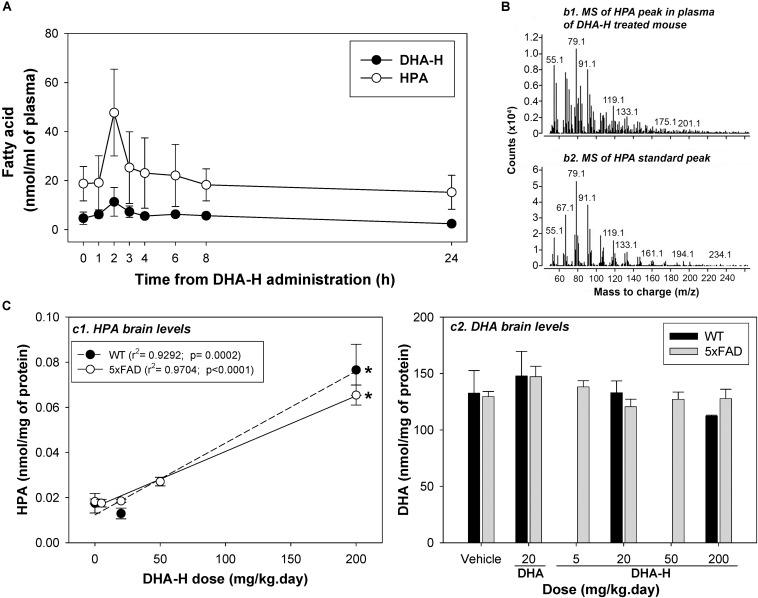FIGURE 4.
DHA-H administration leads to elevated HPA levels in mouse blood plasma and brain. (A) Steady state levels of DHA-H and HPA were determined in the blood plasma in WT mice administered DHA-H (15 daily doses at 200 mg/kg). Both molecules had a similar PK profile, with the notably higher levels of HPA than DHA-H. The maximum plasma concentration was reached 2 h after oral administration of the last dose. (B) Mass spectra for the HPA in mouse plasma (2 h after the 15th dose of DHA-H) and for the HPA standard. The main fragments in both spectra had the same mass-to-charge ratio (m/z). (C) The levels of HPA and DHA were determined in the brain of WT and 5xFAD mice after chronic administration of DHA-H. HPA accumulated in brain of both mouse strains in accordance with the DHA-H dose administered (c1), whereas DHA levels did not vary significantly among the experimental conditions (c2). A modest increase in DHA relative to the controls (vehicle) was only evident in mice administered DHA (20 mg/kg). The data are shown as the mean ± SEM, and the statistical analysis was performed by one-way ANOVA and with Tukey’s post hoc test: ∗p < 0.05 compared to control (vehicle-treated mice).

